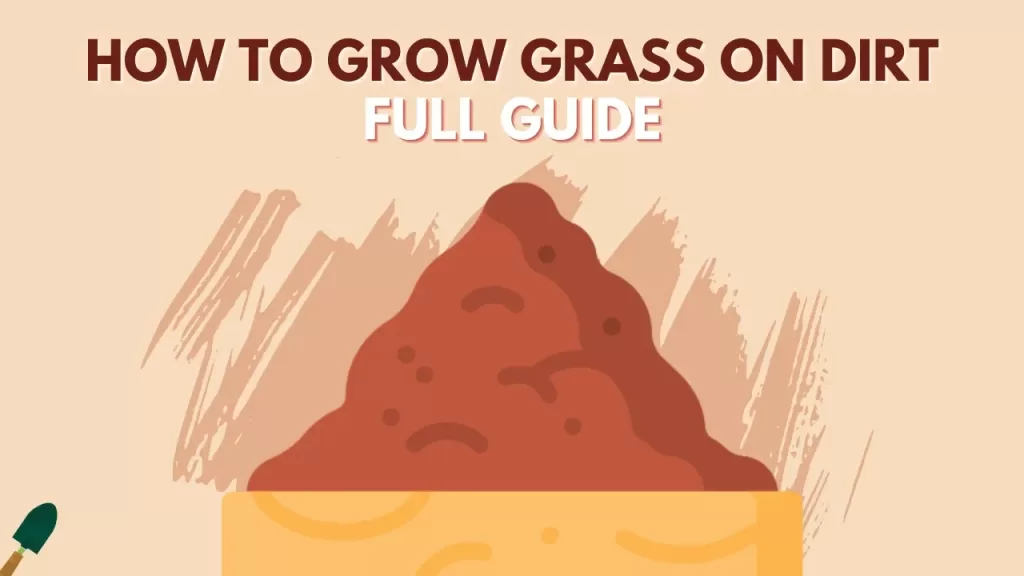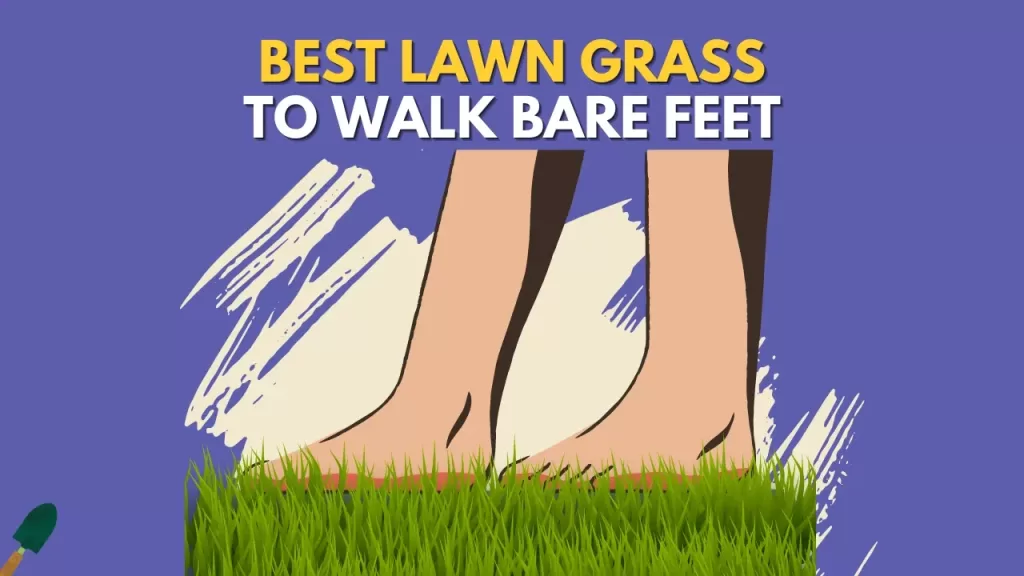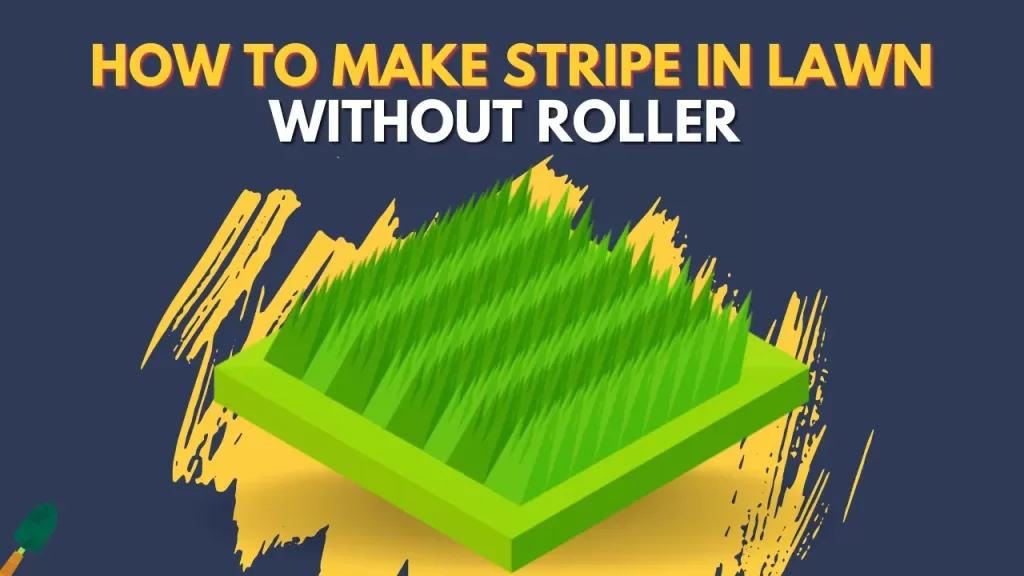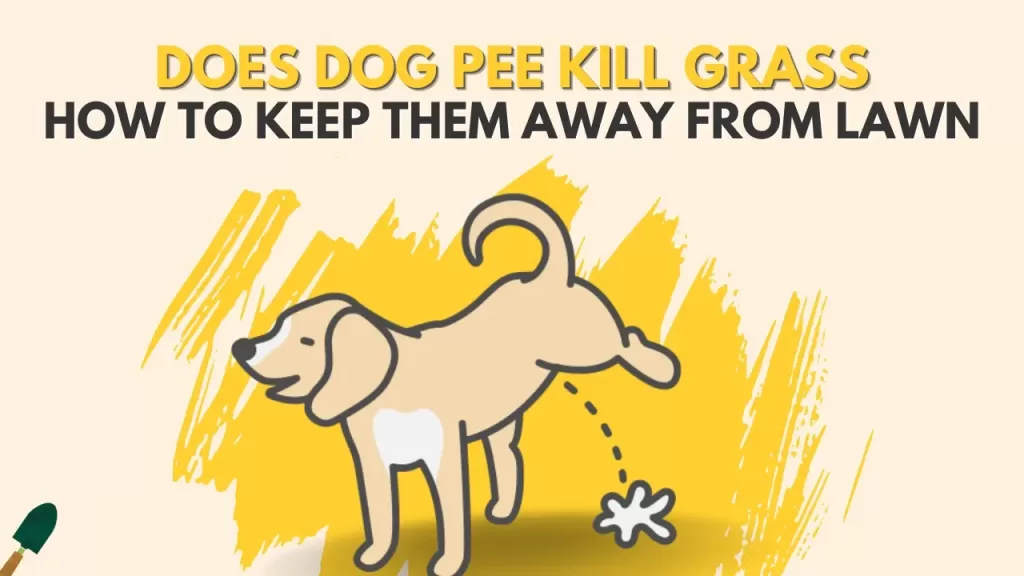Every person wants a beautiful green lawn in front of their house to walk on its bare feet and make their neighbour jealous, but sometimes the soil doesn’t want the grass to grow and thrive.
In this article, we are going to talk about how you can grow grass and make a beautiful lawn on dirt.
How to grow grass on dirt? To grow grass on dirt, you first evaluate your lawn dirt by doing some tests on it. After the evaluation, you provide all the essential nutrients that it needs and then choose a grass that is best for your region. Now you need to seed your lawn properly and then fertilize it with a starter fertilizer.

How To Grow Grass On Dirt?
Now you know how you can grow grass on dirt but we are going to dive deep into the whole process of how you can do it properly in detail:
Step 1 – Evaluate the soil
The first and most important step when starting a new lawn is to evaluate your dirt by testing it. Evaluating your lawn will make sure that you are going in the right direction by seeing what is already on the lawn and what it needs to become healthy and rich. To properly evaluate your lawn for nutrients and acidity of the lawn, take samples from 3-4 different areas and then take them to your nearest lab for testing. It can take some days before you get the result.
The results from the lab will show how many different minerals your dirt already has and in what percentages and what you need to put in to make it healthy and ready for seeding.
Step 2 – Prepare the soil
So now you know what your soil condition is, what it already has and what it needs. Now the next step is to prepare the dirt so that it is capable of supporting the growth of grass and making your lawn look beautiful.
Let’s take a look at how to prepare the dirt for your grass:
Cleaning: Make the dirt clean by removing all the unnecessary debris like big rocks and stones or any other waste material that shouldn’t be there. These materials can block the grass from growing and can cause some patches in your lawn. So it is very crucial to remove them.
Aerating: See if your dirt is compacted or not. If you find that the dirt is compacted then make it loose by aerating your lawn. Making the soil loose and soft will ensure that the roots of the grass will get all the proper minerals, water, and air.
Topsoil: Add topsoil to your lawn to increase the health of the lawn and boost the growth of the grass after seeding. Dirt usually needs topsoil to make it balanced for reseeding and to provide all the essential nutrients to the grass.
Mix the topsoil with the dirt using a rake or fork to create a good layer for the seed to make sure that there is no separation between the topsoil and the dirt below.
Raking: Make your whole lawn even by raking it to ensure the proper surface of the lawn. This process will ensure that there will be no patches or puddles in your lawn after watering or rainstorms.
What I do every time I prepare the soil is to apply a pre-emergent to my lawn to stop any weeds from growing in my lawn. This could happen due to all the disturbance of raking and aeration which can make weed seeds come to the top.
P.s. You need to wait for 2-3 weeks after applying pre-emergent to do seeding your lawn because pre-emergent can also block grass seeds from germinating as well.
Step 3 – Decide which type of grass species to grow
Choosing which type of grass to grow on your lawn is very important. If you choose grass that doesn’t do well in your region or needs a lot of maintenance (and you can’t put that much effort) then that grass will not do well and your lawn will look very bad.
Before deciding and choosing the grass to grow on dirt you need to consider the following factors:
- What is your region and what type of climate do you have?
- Is it hot or cold?
- Do you get proper water (like rain or from the tap) or have a water problem in your region
- Does your lawn get proper sunlight or it is covered by shade
- How do you use your lawn, does it get a lot of foot traffic or nobody goes in the lawn
- What amount of money are you willing to spend on your lawn (now and for maintenance)
After you have answered all these questions, you need to know what all kinds of grasses are, so let’s take a look at all the different types of grasses for your lawn.
Grasses can be divided into several categories:
| Season | Maintenance | Cost |
Season
| Cool-Season Grass | Warm-Season Grass |
|---|---|
| Perennial Ryegrass | Bermuda grass |
| Kentucky Bluegrass | Centipede grass |
| Tall fescue | Zoysia grass |
Maintenance
| Low Maintenance Grass | High Maintenance Grass |
|---|---|
| Bermuda grass | Ryegrass |
| Zoysia grass | Centipede grass |
| St. Augustine grass | Kentucky bluegrass |
| Tall fescue |
Cost
| Expensive Grass | Low-Cost Grass |
|---|---|
| Marathon grass | St. Augustine grass |
| Bentgrass | Zoysia grass |
| Centipede grass | Fescue grass |
| Kentucky bluegrass |
Step 4 – Seeding the lawn
All of the work we have done till now will go in vain if you don’t do the seeding properly. Seeding your lawn properly is the ultimate way to make your lawn thick and beautiful.
The first step for seeding is to divide all seeds into two equal batches for application. Take one batch of the seeds and put it into the seeder and seed your lawn vertically then take the other batch of the seed, put it into the seeder, and do the seeding of your lawn horizontally. This way you will cover your lawn in every direction completely.
After you have done the seeding of your lawn the next step is to cover it up with the help of a rake. Try to cover the seeds 1 inch under the soil. Another thing you can do is apply mulch over your lawn to cover up the seeds. I have tried both methods and both of the methods worked for me pretty well.
Keeping the soil moist consistently is very important after seeding as the seeds need cool conditions to sprout. Keep in mind that you need to water your lawn 4-5 times a day with a low amount of water to ensure that the seeds don’t wash away due to heavy watering.
After following frequent watering for the initial days you will see little sprouts growing in your lawn. When the grass is 4-5 cm in length, switch the watering method to deep infrequent watering to promote the deep root system of your grass. This will make you healthy and drought resistant.
The last step in this process is to do some rolling to make sure all the seeds are covered in the soil and are not washed away with the water.
Step 5 – Fertilization
Dirt on itself is very low on nutrients so fertilization becomes a very crucial part of growing on dirt.
For the first preparation of the soil, you can apply a starter fertilizer to your lawn which boosts the germination process of the seeds but you can apply this after seeding in your lawn too.
Carefully read the label of the starter fertilizer you are using on your lawn to make sure you are doing everything properly.
For a proper application of the fertilizer, what I do is divide my lawn into small parts and then complete the application in one part and then the other and overlap between the parts to cover the whole lawn. What this ensures is that I am not leaving any area of my lawn and it won’t look ugly. The last thing you want is some ugly patches on your lawn.
After the fertilization process rakes your lawn lightly to mix up the fertilizer with the soil.
After the process of seeding and starter fertilizer which boosts the germination of the grass, your grass needs more minerals to thrive in your lawn.
To make sure of the availability of these minerals you need to make a fertilization schedule for your lawn.
For proper fertilization what I do is choose a slow-release Nitrogen fertilizer which ensures that the grass will get the nutrients steadily for a long time. Nitrogen is very helpful in helping the grass grow healthy and thick.
For applying this fertilizer, divide it into four different batches and wait for six to eight weeks after the seeding process to apply the first batch. Apply the fertilizer at the start of the growing season to ensure proper growth of the grass and maintain a gap of 8 to 10 weeks before applying the other batch.
Step 6 – Take proper care of your grass
Taking proper care of your lawn is very crucial for the proper growth of the grass and also for the lawn to look good. The three main factors are Watering, mowing, and fertilization. Let’s talk about them in detail:
Watering – watering your lawn is a very crucial part of maintaining your lawn as it can make or break your lawn. If you flood your lawn with water every day, then the soil will be soggy and the roots will rot and die. Try to water your lawn deeply 2-3 times a week which will ensure a deep root system of your grass. The best time to water your lawn is early in the morning (before the sun comes out with its heat) so that the soil can absorb all the water and it doesn’t just evaporate due to the heat of the sun.
Mowing – mow the grass frequently so that you don’t cut away a lot of the grass blade. Try to cut no more than 1/3rd of the grass when you are mowing. Use a sharp blade mover to make sure the cuts are clean or it can cause diseases in the grass. Maintain a height between 2 to 3 inches on your lawn.
Fertilization – we have talked about fertilizer in detail above, but I am stressing about it since we are growing grass on dirt and dirt is very low in minerals and nutrients for the grass to grow. So to give food to the grass, you need to do proper fertilization.
How long will it take my grass to grow?
The time for your grass to grow usually is between one to four weeks. The climate and grass and what kind of seed you have selected will also determine how much time it will take for your grass to grow. If you live in a cooler climate then your grass will take more time to grow.
3 main factors determine how much time your grass will take to grow. Let’s talk about them in detail:
- Temperature – Temperature plays a very crucial role in seed germination both from air temperature as well as soil temperature. The higher the temperature the faster the grass seed germination.
- Season – Season determines if it is a good time for the grass you have just planted. If you seed your lawn in the fall with the grass which grows in summer then you wouldn’t see any success and it will take a very long time for you to see any result. On the other hand, if you seed your lawn in the right season, you will see the result in a very short period.
- Sunlight – sunlight is also a very crucial factor in grass growth. If you have a lot of shade in your lawn or some part of it then choose a grass that grows in shade or else you will see very slow growth of the grass due to improper sunlight.
What I recommend to see a good growth of grass in your lawn is to seed your lawn at the beginning of the summer season when the temperature is not very hot but the weed are also not that dominant at this period of the time, so the grass can establish itself on the whole lawn and block any unwanted plant to grow.
How to plant grass seed on hard dirt?
The process of growing grass On hard dirt is very similar to the process of growing grass on dirt. For growing grass on hard dirt, you need to evaluate the soil to see what nutrients it already has and what it needs. After the evaluation, you need to prepare the soil for seeding, which consists of first aerating and raking your dirt because it is hard and compacted. By aerating and raking you are making it loose to absorb all the essential nutrients and fertilizer. After this, you need to do seeding by choosing the best grass for your lawn.
If you have a concrete backyard and you want to convert it to a lawn then see our guide on how to grow grass on concrete.
HOPE NOW YOU CAN GROW A BEAUTIFUL LAWN ON DIRT.




